DEFINITION OF TERMS:
- KEYSTONE means they are listed by National Wildlife Federation as core plants for a wildlife garden in my ecoregion (Ecoregion 8).
- NOT QUITE NATIVE means they are slightly out of range but adjacent to NYS as determined by GoBotany and NY Flora Atlas.
- Otherwise the plant is a NY-native or native to the area noted.
MIDWEST NATIVE: Anise hyssop (Agastache foeniculum)
IMPORTANT UPDATE:
Now (2021) I fear that I fell prey to inaccurate labeling! As far as I can tell, I have the Korean variety, not the North American native! I was first alerted to this through a Spring 2021 Wild Ones Journal article, available to Wild Ones members.
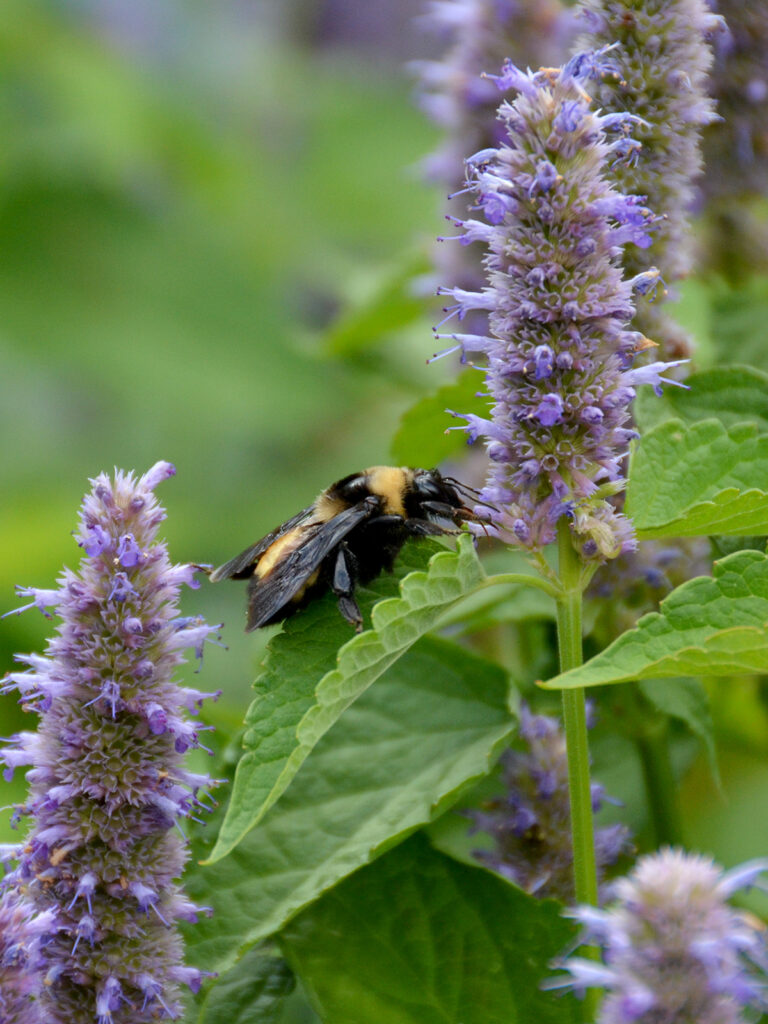
I can’t remember when I first got this plant, but I have grown it for many years, thinking of it as a native plant.
It’s disappointing to learn recently that it’s native only to the Midwest!
Still, I’m probably not going to eradicate it since I don’t think it will spread beyond my yard into natural areas.
I’ll count it as part of the 5% to 10% of the total plants in my yard that aren’t strictly native to CNY.
Anise hyssop has beautiful, nectar-filled flowers bees love, but one of the most appealing aspects of this flower to me is something you can’t experience with this photo: its minty, licorice fragrance. I can’t pass by this plant without grabbing a leaf, crumpling it, and sniffing its scent. Hyssop is a member of the mint family, so the mintiness is understandable, but add to that the licorice scent, and it’s a winner!
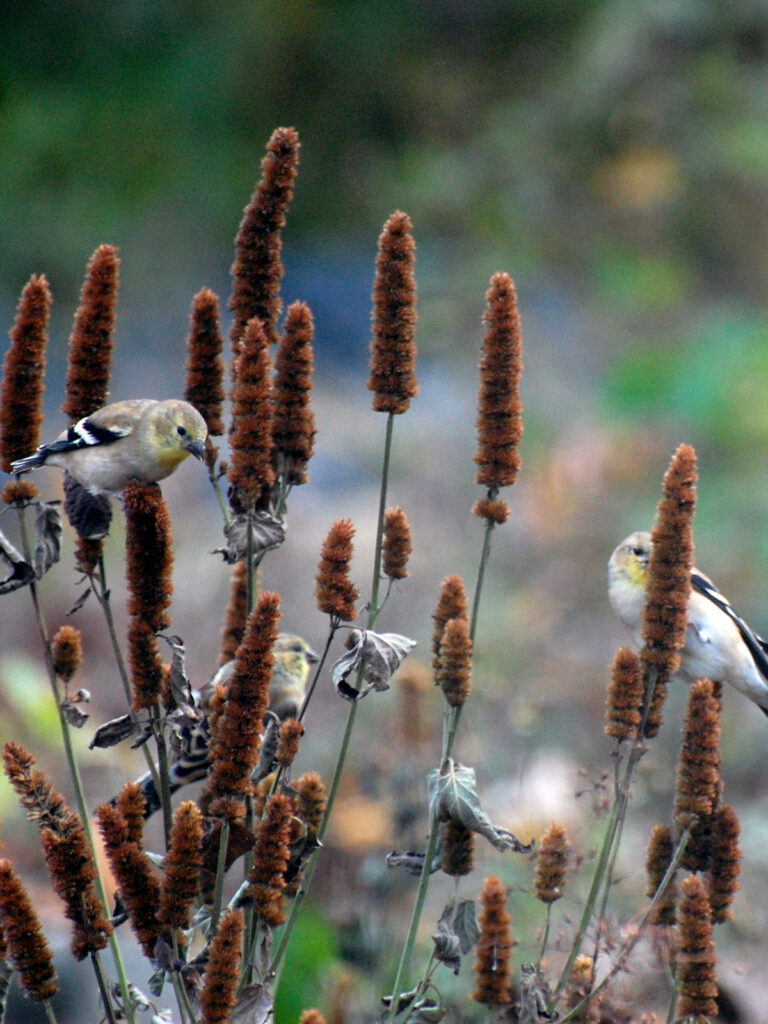
Truly an all-purpose plant! When the flowers fade, they become seeds birds find irresistable. (The leaves are also edible for people, and recipes exist, but I haven’t experimented yet.)
(NOTE: Unlike some mints, it does NOT spread underground, so it’s not a problem plant; seedlings are welcome, and extras are easily pulled.)
Wildlife: Butterflies, hummingbirds
** SPECIAL VALUE TO NATIVE BEES **
** SPECIAL VALUE TO BUMBLE BEES **
- Learn more:
- Wildflower Center: Anise hyssop
KEYSTONE: Purple giant hyssop (Agastache scrophulariifolia)
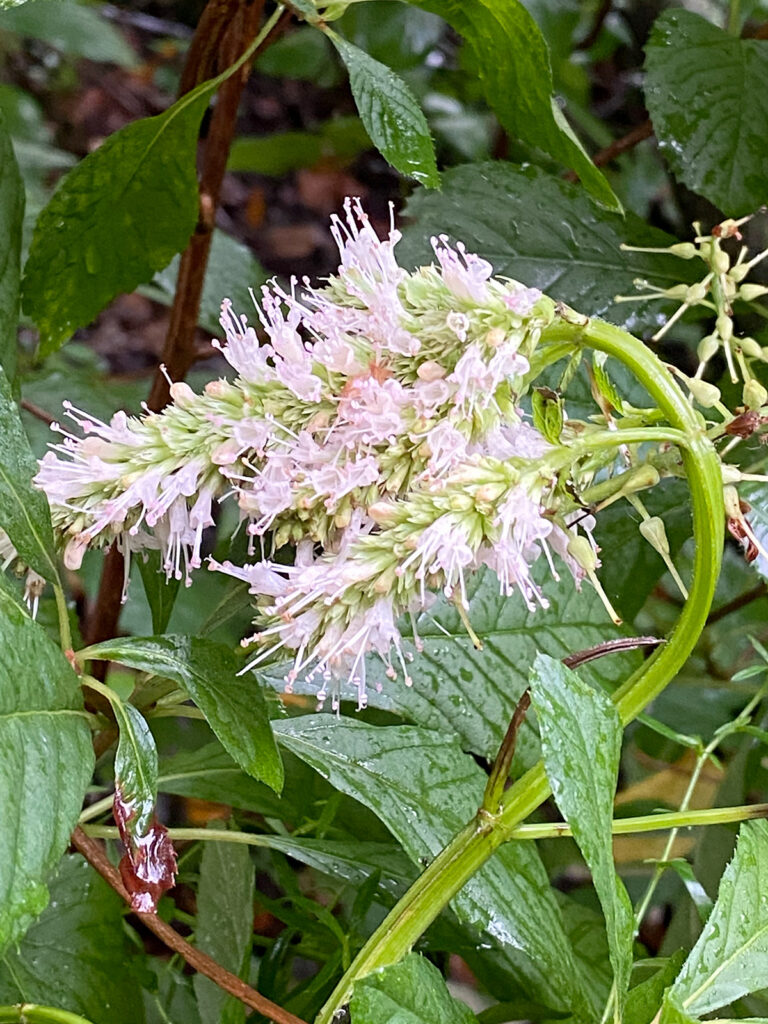
We bought this at our HGCNY 2021 Fall Plant Sale, partly to see how this particular hyssop grows and partly to deal with the problem with my other hyssop (see above).
(NOTE: This photo is of the plant we just purchased and planted. It’s curved because it had been laying on the ground in the nursery. It should produce nicer flowers next year.)
** SPECIAL VALUE TO NATIVE BEES **
Special Value to Bumble Bees
- Learn more:
- Wildflower Center: Purple giant hyssop
White snakeroot (Ageratina altissima)
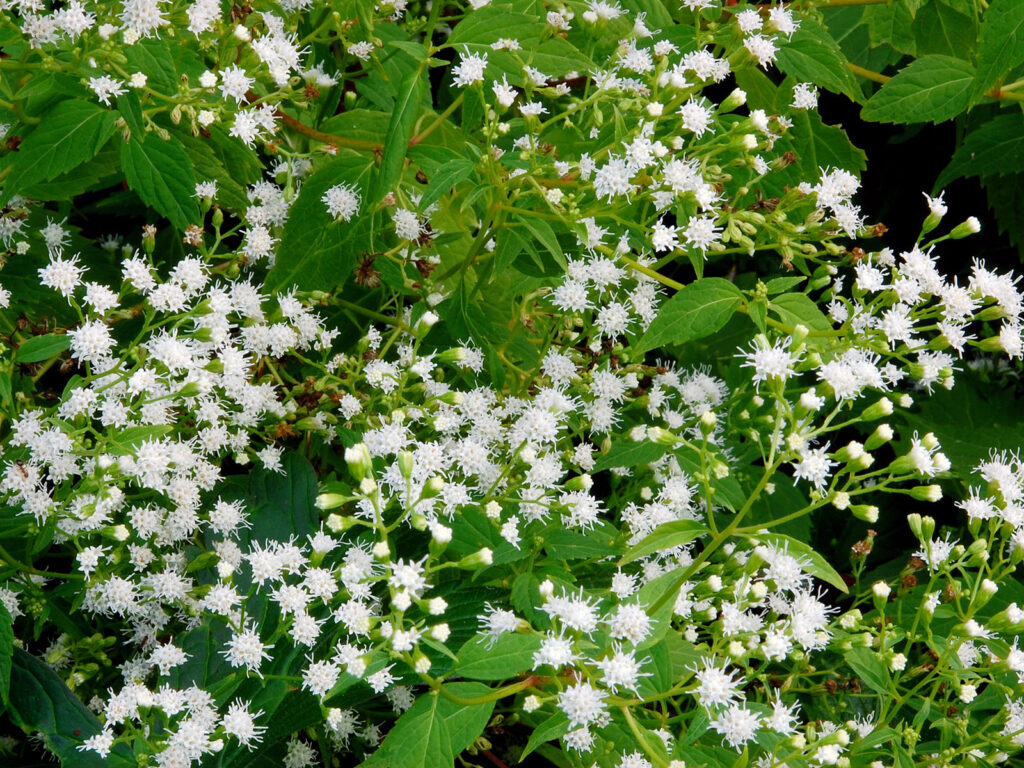
This one sparkles in the shade. It spreads itself around a bit, but not so much to become a nuisance.
** Attracts predatory or parasitoid insects that prey upon pest insects **
- Learn more:
- Wildflower Center: White snakeroot
Nodding onion (Allium cernuum)
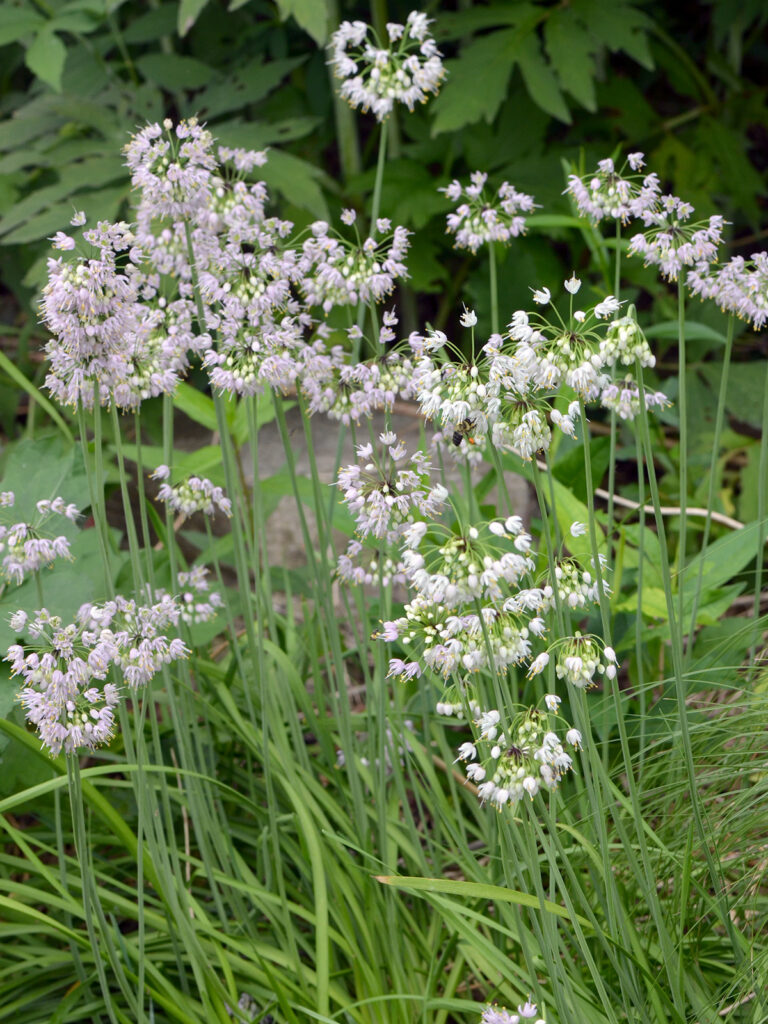
These are supposed to spread quite a bit, and I do see seedlings in the immediate area of bare ground, but I don’t find them to be a problem. Extras are easily pulled.
In fact, I’ve deliberately sprinkled the seedheads in other patches of ground, hoping for some more. They’re about 15 inches tall and a lovely pink color. I think they’re rather elegant.
Wildlife: Butterflies, hummingbirds
Larval host: Hairstreak
** SPECIAL VALUE TO NATIVE BEES **
** Attracts predatory or parasitoid insects that prey upon pest insects **
- Learn more:
- Wildflower Center: Nodding onion
Wild leeks (Allium tricoccum) aka ramps
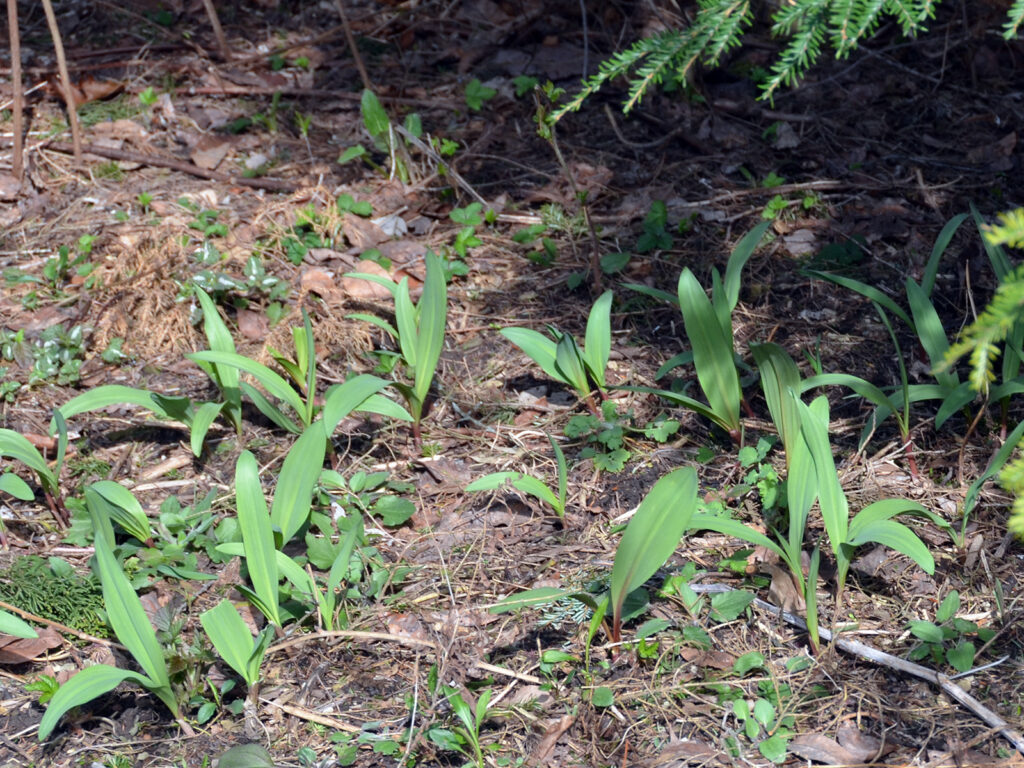
Our HGCNY friend gave us some ramps from her forest a few years ago, and we’re in the process of establishing a patch under our back hemlocks. We haven’t harvested any yet since we want the patch to grow larger. We’re looking forward to this delicacy!
- Learn more:
- Wildflower Center: Wild leeks
- PennState Extension: Ramps factsheet
MIDWEST NATIVE: Common bluestar (Amsonia tabernaemontana)
I can’t remember when or where I got this plant, but it’s another plant that I had thought was native.
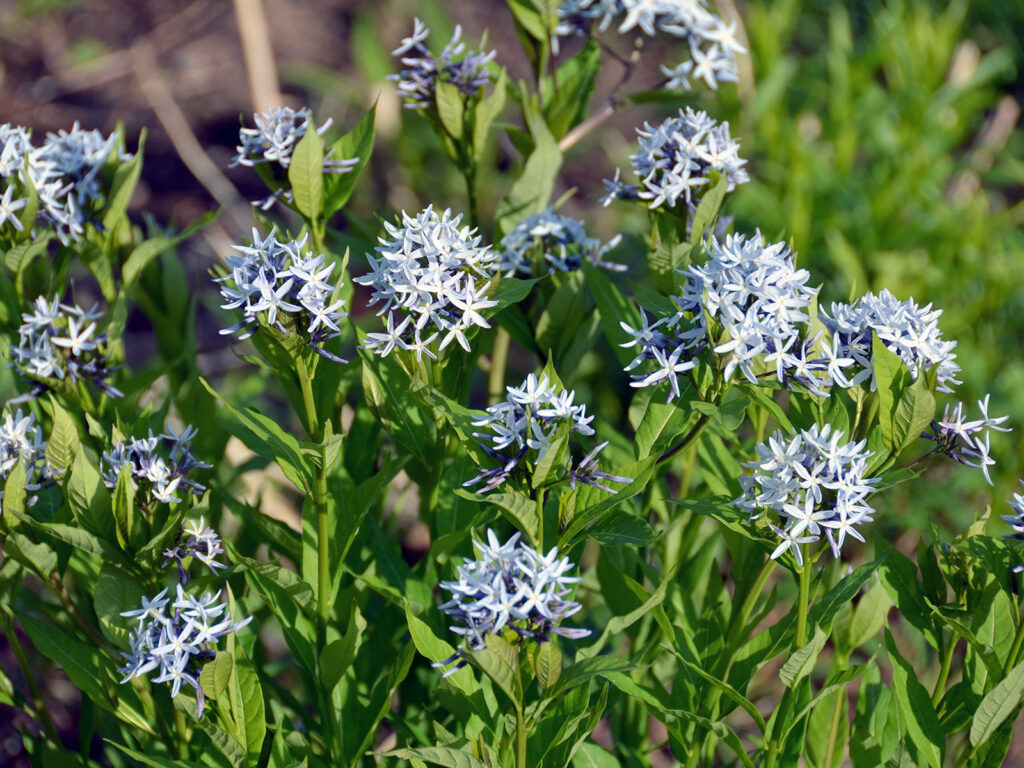
Common bluestar is aptly named — its flowers are light blue and star-like.
They bloom later than the early spring ephemerals, but a bit earlier than most other summer plants, so it’s nice to have some color at that time.
- Learn more:
- Wildflower Center: Common bluestar
Pearly everlasting (Anaphalis margaritacea)
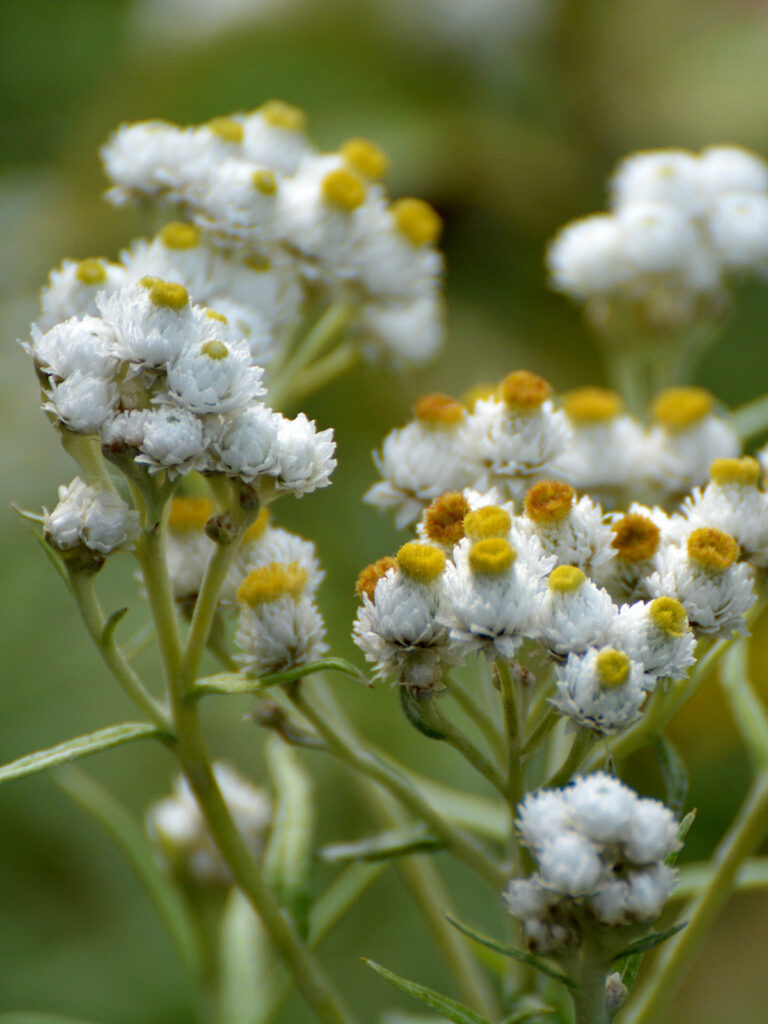
This is an interesting plant, with gray downy leaves and papery-looking white flowers. These are interesting enough that I would grow these plants anyway, but I grow quite a few since they’re an important larval host plant for the American Lady butterfly.
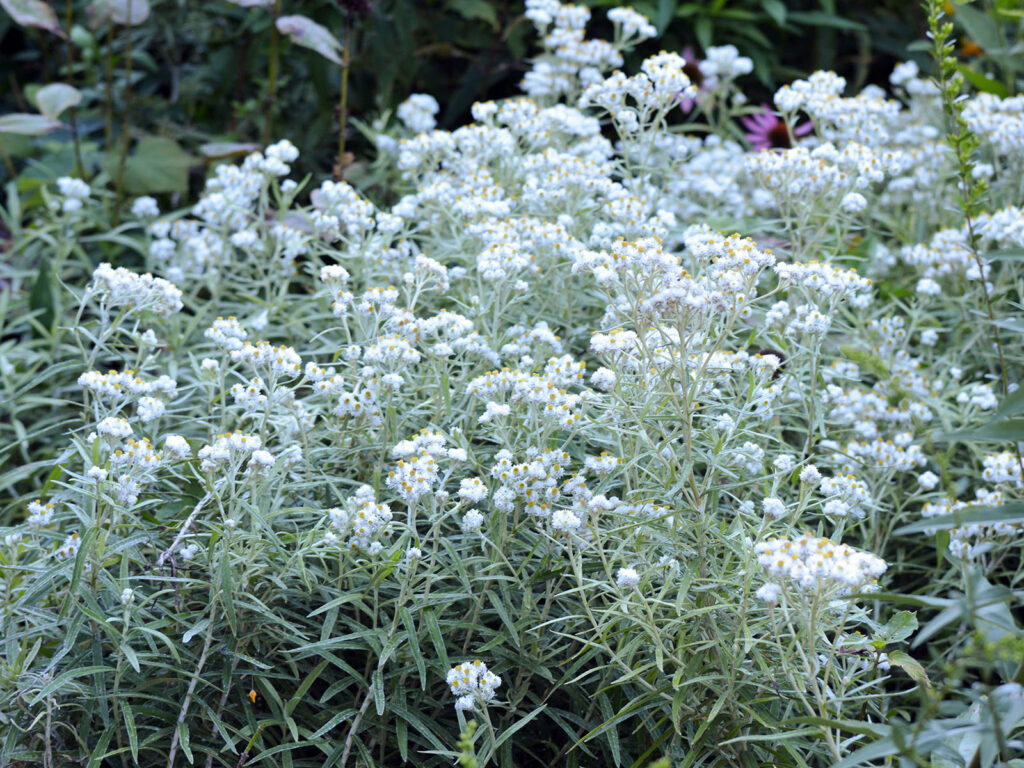
If you have more plants than American Lady caterpillars, pearly everlasting can have a lot of flowers.
Wildlife: Nectar for butterflies
Larval host: Skippers, American lady, Painted lady
- Learn more:
- Wildflower Center: Pearly everlasting
Canada anemone (Anemone canadensis)
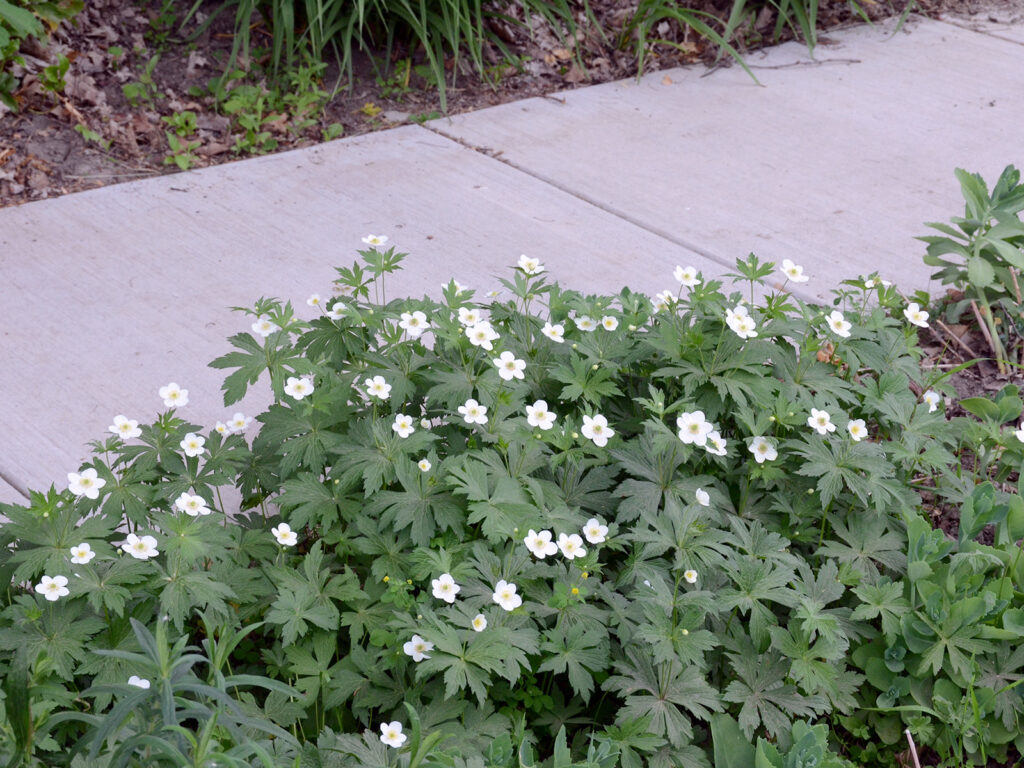
A beautiful white flower, but it needs to be sited carefully. I saw it spreading throughout the bayberry bed, so I decided to replant it in the area between the sidewalk and the street, which should keep it confined. It’s too beautiful not to find a place for it.
UPDATE: Though it initially spread throughout its area, after a few years it has retreated to the edge near the sidewalk. I suspect it doesn’t like road salt and/or the higher heat next to the road!
** Attracts predatory or parasitoid insects that prey upon pest insects **
- Learn more:
- Wildflower Center: Canada anemone
Thimbleweed (Anemone virginiana)
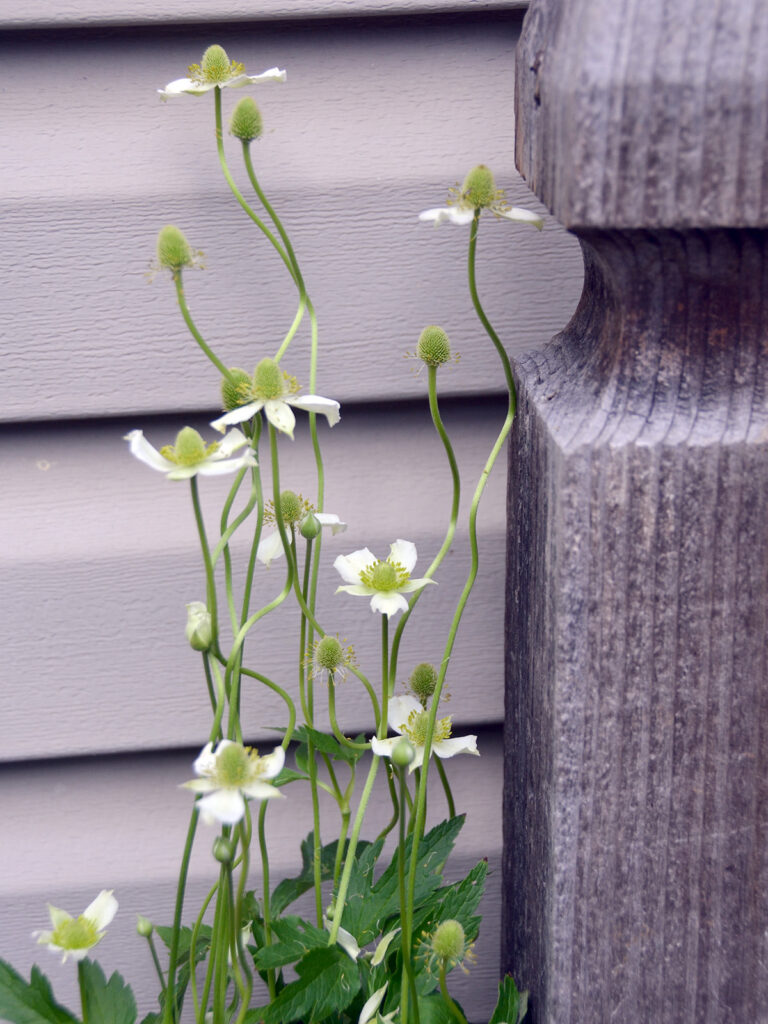
A charming little plant. I like the simple flowers, which are decorated with a little yellow halo. Just as with other plants such as flowering dogwood or flowering spurge, the white “petals” are actually the sepals.
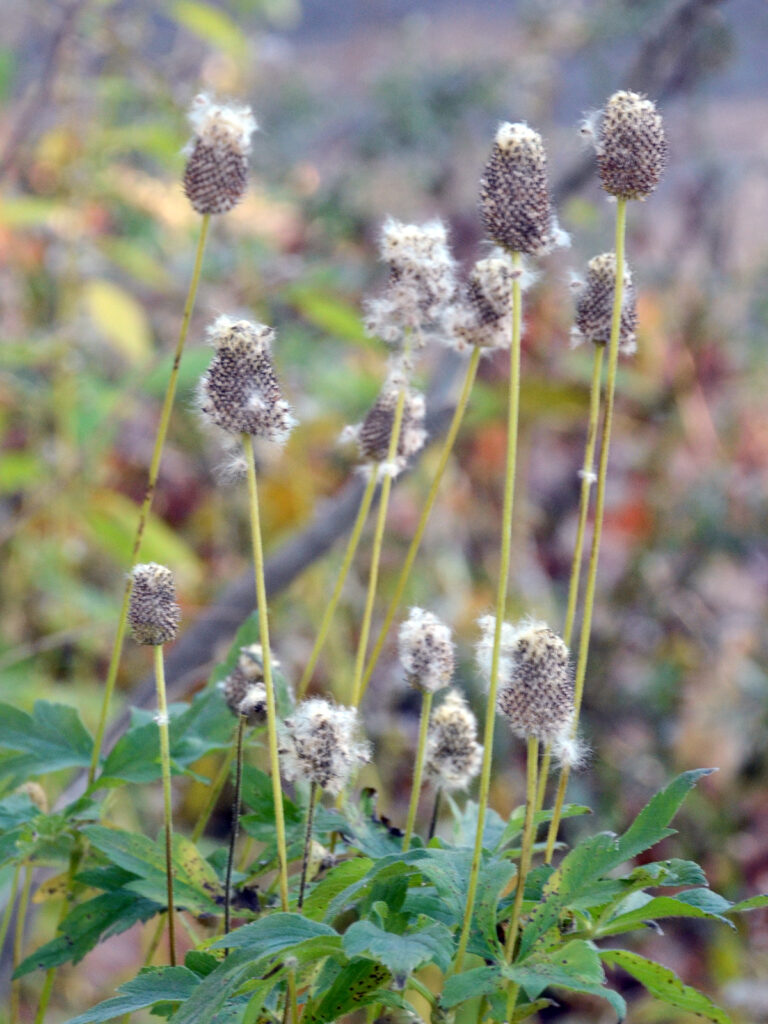
I like to see the wide variety of seeds on all my plants. These thimbleweed seeds are especially interesting. Very cottony.
It does seed itself around, but I don’t find them to be a problem. The extras are easily pulled out, though I rarely do.
- Learn more:
- Wildflower Center: Thimbleweed
